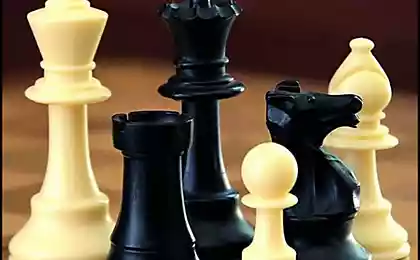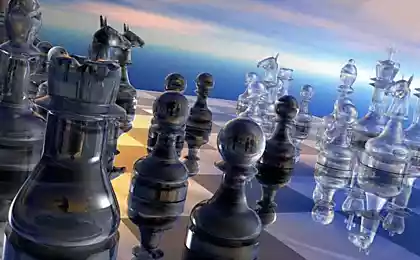687
Other chess
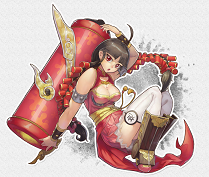
Many of the things we do not understand not because our concepts are weak;
but because these things do not belong to the circle of our concepts.
Kozma bars "Thoughts and aphorisms"
They are all beautiful!
Katsumoto «The Last Samurai»
Over the centuries of its development, it gave us a lot of chess games. Chaturanga and shatranj, Makruk and Sittuyin - it seems they do not have the number! Some of them, such as Buryat Shatar differ from our usual Chess only slightly, others have come in their developments so far that seemingly do not have them absolutely nothing. Today, I want to talk about the Korean chess tradition.
Start talking about the "Korean chess" will have, oddly enough, with the Chinese. Officially, a modern version of Xiangqi has been standardized by the Emperor Wu Di of the Zhou Dynasty in 569 AD., But in the game "on the board with figures" China played in the past. The most ancient game with a preserved description of the rules, it is considered quite a funny "Xiangqi seven kingdoms" described advisor Song Dynasty, named Sima Qian, who lived in the years 1019-1086 AD. Presumably, this game was extended during the "Warring States" from 476 BC up to the unification of China in 221 BC. It is known that there were more ancient "chess" game (such as the "Big Bo" and "Little Bo"), but the descriptions of their rules to the present day has not been preserved.
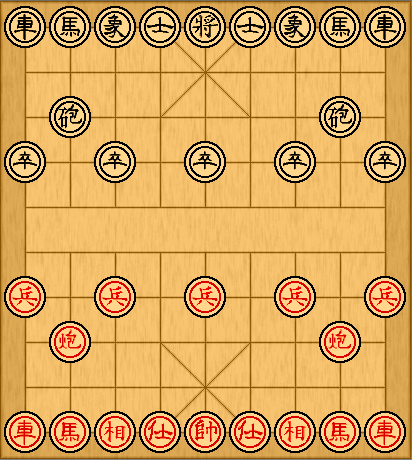
Xiangqi board is very different from our usual chessboard. The figures are arranged at the intersection of orthogonal lines, but not in cells of the board, as is customary in other chess games. Board is divided into two parts "the river", which can cross only some types of shapes. Catches the eye "palaces", indicated by diagonal lines intersecting. The generals (the analogue of chess kings), moving one step vertically or horizontally, and their advisors, able to move one step diagonally, can not leave the palace. This greatly simplifies the task of matovaniya as for general do not have to run all over the board. In addition, although the generals can not leave his "palace", they can influence each other. Two generals may not be on the same vertical line, if there are no pieces in between.
Alignment of the first line shapes generally resembles west. On both sides, the palace is surrounded by "elephants", followed by "horses" and "carriages". If moves "carts" are completely analogous to the rules of chess move "boat", there are important differences in the rules of movement of other pieces. Terms move "horse" like the West, but in Xiangqi "horse" can not "jump" the other figure (or your opponent). This usually leads to an interesting tactical situations such as the following:

Black "horse" can not attack the enemy, as its movement is blocked by an enemy pawn, but can be eaten "red" as the path in front of them "horse" is free. "Jump" is a figure in Xiangqi, "elephant". It moves exactly two cells on the diagonal, and may not cross the "river." However, even for the "river" these figures failed to meet with the "elephants" of the enemy. Obviously, the "elephants" are very weak figures, but when used properly (especially in the pair), they are very useful for the protection of the key points of its territory.
Just as the Japanese "Shogi" gave the world the principle of "reset" shapes, "Chinese Chess" gave us a "gun." This is quite a unique figure in the initial position located on two points ahead of "horses." Silent stroke "gun" in Xiangqi, similar to the movement of "wagon", but "fight" the enemy's figure, it is necessary to "jump" another piece, or his opponent. This figure is called the "screen" or "carriage". Guns are very dangerous in the beginning of the game, but towards the end of their value falls, as the figures on the board becomes less and find the "carriage" to perform combat becomes difficult.
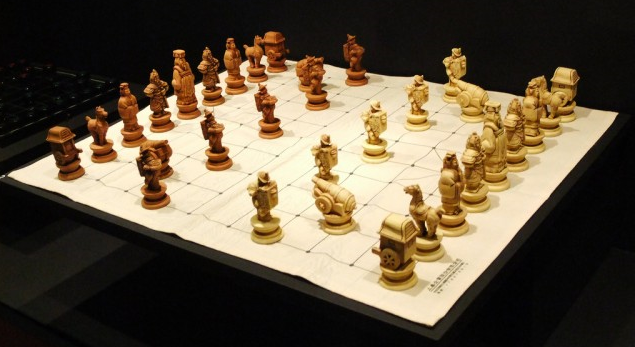
It remains to tell the "pawns". They were less than in European chess, and they can not "support" each other "force" on the diagonal. Pawns move only one point. Before crossing the "river" (ie, exactly one turn), "pawns" go only forward, but at the "river" in the enemy camp, they get the right to go to the side, left or right horizontally. Unlike western chess, it does not make sense to tear pawns to the last line. In the "Chinese Chess" pawns in what does not turn (the one who was born a farmer - a farmer, and his life will end). Upon reaching the farthest horizontal, pawn can only move sideways. However, this does not prevent them to go in the "palace" of the enemy, to support a mating attack on the last line.
Xiangqi is very popular not only in China but also abroad. In Vietnam, this game is well known under the name of "cn tuóng». In other countries, "Chinese Chess" less popular, but because the Chinese are distributed worldwide, Xiangqi, perhaps, can be considered the most widespread game of chess. In a very similar game played in Korea, but Koreans are Koreans would not be if it were not made to play its very significant changes.
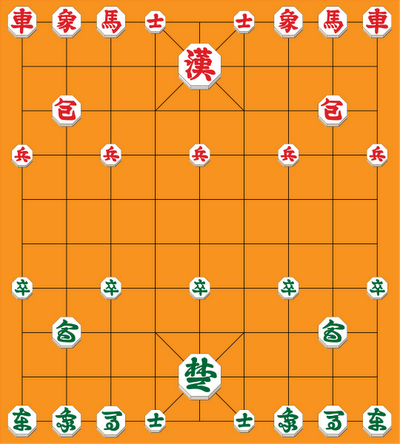
First of all, it can be seen that the general, now located in the middle of his palace. In addition, Janggi (so called this version of the game) players are allowed to change the starting line-up of horses and elephants, on their side of the board (which, to some extent, in common with the game "chess Fischer" and Sittuyinom). In total, 16 possible options for the location of the initial figures. The main requirement is to have a horse and an elephant on each flank.
There are also significant differences in the rules of moving figures. First of all, Janggi, and "general" and his "advisers" can move through all the marked lines inside the palace. Also, the diagonal lines of the palace, can travel "chariots" and "gun" (provided that they have entered into the enemy's palace). Of course, they are still obliged to move in a straight line, in compliance with all the rules of the implementation of its stroke. On the diagonal lines of the palace (but only forwards) have the right to move and pawns who have come into the enemy's palace. By the way, on foot, Janggi, from the outset, even in their territory, already have the ability to move one point left or right, as well as pawn Xiangqi, infantrymen entered the enemy camp. Elephant in Janggi goes quite differently:
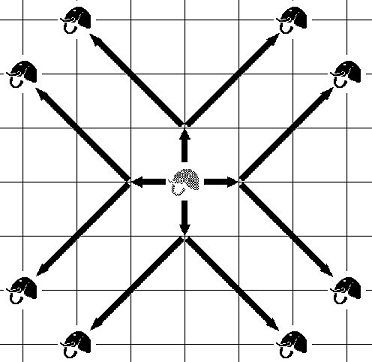
As well as the "horse", it does not "jump" figure. Both cells, through which the "elephant", must be empty. Elephants in Janggi can "walk" through the territory of the entire board (it can be seen that the "river" on the Korean board, absent). The biggest changes have been "gun." In Janggi, for all of its stroke (including silent) requires a "mast" (yours or enemy figures). At the same time, the other gun "gun carriage" can not serve. Also, the "gun" can not be attacked by another "gun" (that can effectively defend against attacks with guns).
By Janggi, in Korea, are a little less seriously than Xiangqi in China. Janggi considered the game of the common people. The intellectual elite of this country prefers Baduk (Korean name Guo games). Nevertheless, the game is popularly loved and has a rich history. One of the manifestations of such love can be considered the invention of different versions of the game on the changed rules. Above all, in this regard, the Japanese are distinguished. There is just an incredible amount of options for Shogi game, invented by them (here, not all), but also Koreans invented something.
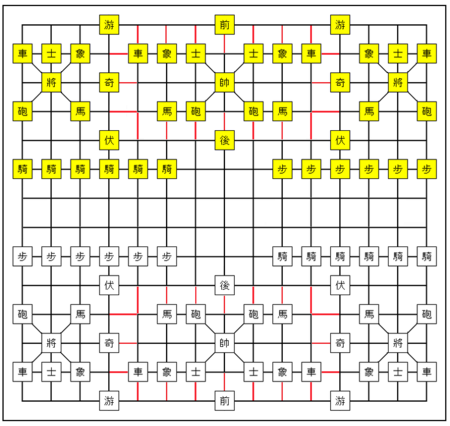
Here Gwangsanghui me somehow immediately interested. Still would! Game of the 18th century, in which there is as much as three «Palace» on every side! It remained to deal with how to go figure. With this immediately had difficulties. In principle, the required information is there, but it was in Korean. Google Translate helped a little. Fortunately, found a good Korean Innopolis (named Jooyoung Lee), who transferred me to this wonderful text into English.
The translation There are 15 vertical lines and 14 horizontal lines on the board. (15 boxes horizontally, 14 boxes vertically) 210 boxes over all.
It is divided into North and South, 6 horizontal lines, that is 90 boxes, on your side, are called «the entire army (三軍)". The intersection of five horizontal lines on your side and 9 middle vertical lines, which are 45 dots, are called "the centre (中 軍)", and the 21 boxes excluding borders of "the centre" are called "내영 (Naeyoung)" . The 9 boxes located at the very centre of Naeyoung are called "Nine Palace (九宮)". In the Nine Palace, there are diagonal lines as well and you put your king in the middle.
Behind the King, both on the left and right, you put 士 (scholar). On both side of 士, you put 象.車 should be placed on the left and right of 象.砲 should be placed on the other corner of the Nine Palace (where 士 did not take).馬 should be placed 2 boxes before 象 (which is left and right of 砲).
24 boxes surrounding "내영 (Naeyoung)" is called "외영 (waeyoung)".
前鋒 is placed in the very centre (that is 2 boxes above the king).後將 is place in the middle of lower side of "외영 (waeyoung)" (that is 2 boxes below the king).
In "외영 (waeyoung)", two places where they have the same horizontal line with the King, you place 奇, and the side corners in the lower side of "(waeyoung)" you should put 游, and above side corners you put伏.
The empty box in front of 前鋒 is called 營 門, on the left of 營 門 space out a box and put 步, then on the right side, again space out a box and put 6 騎 s.
The intersection of left 3 vertical lines and 5 bottom horizontal lines is called 左 軍 (left army) and the intersection of right 3 vertical lines and the five bottom lines is called 右軍 (right army). The centre of left army and right army is also called Nine palace, which has diagonal lines, and where 將 should be placed.
Behind 將 of left and right army, place a 士.
In the outer room next to 士 in left and right army, put 車, and inner room next to 士, put 象. The top corners of the nine palace of left and right army, put 馬 inside and put 砲 outside.
The rules for moving the king and 將 is the same as 宮 in traditional Janggi, 車, 馬, 象, 砲, and 士 is same as Janggi as well.騎 can only move forward one diagonally.步 is same as 卒 · 兵 in Janggi.
游 moves like 馬 in Chinese Janggi. 1 伏 can move diagonally.游 can not take other pieces or taken by other pieces on the board. However, it can only be taken by 伏.
奇 can move horizontally or vertically one or two moves like 車.
You win if you capture 元帥, but if you did not, dominant side wins. If 將 from either left or right army is captures, all the pieces in there belongs to the other party (the ownership changes). However, if you capture the piece which captured your 將 right afterwards, you can get all the lost pieces back.
前鋒 can only be captured when exchanging.
I can only say that this is really is a very interesting game. Besides the traditional shapes Janggi, added some new pieces, but that is not even in them, and in a variety of tactical situations generated by the game. Most collisions in the game are asymmetrical (the situation with the "horses" has already been analyzed above). For example, in the game there are two kinds of pawns - traditional and more, move and beating by one point on the diagonal. Initially, the figures are arranged in such a way that opposite each other are pawns different type. The game has a figure (游), move as "horse" that can not be beat other shapes and can be beaten only 伏 (similar figure (Diplomat) has referred me above "Qiguo Xiangqi", but there it is completely invulnerable and moves like chess queen).
As I expected, the most interesting is the case with additional "palaces". Capturing enemy general in one of these palaces, we have control over all "attributed" to his figures, but only on condition that attacked the figure will not be eaten the next move. To some extent, this is consonant with the "rule of discharge" Japanese Shogi, according to which, combined figures are not removed from the board forever, and fall into the "reserve" player, and they can be used later. I think that as the "rule of discharge", this rule is a metaphor of warfare, from the point of view of the inhabitants of ancient Korea. Capturing the castle, we get "the load" All the occupants servants, but if the attack was repelled, "defectors" back under the control of the legitimate owner:
For me, there are not clear until the end of the phrase relating to the figures and 前 後. The rules say «can only be captured when exchanging», at the same time, nowhere specify how these figures go. I think they need to remain motionless while protecting vital, the strategic plan, the central vertical. It is not absolute protection, because the figures can be taken, but only by "exchange" (ie loss attacked the figure). In addition, the purpose of them can be attacked by "gun» (砲). By the way, it may seem that the central "guns" both sides "shoot through" side lines of the enemy, "the palace". Of course, it is not so! The "Korean chess", a "gun" can not use the other as a "mast". In addition, you can not start the game progress "gun».
Remaining was a matter of technique. The game was developed using "Zillions of Games" and is available at GitHub. Those interested can read. KDPV for illustration was taken from an article by Dmitry Skiryuka dedicated to Art, the figures related to Xiangqi.
Source: geektimes.ru/post/278182/
